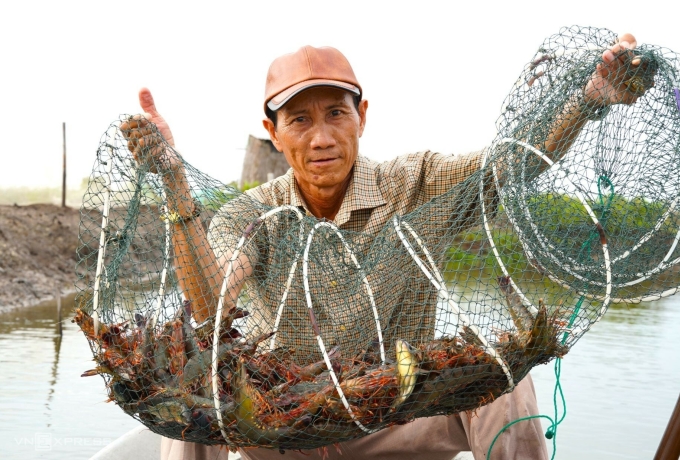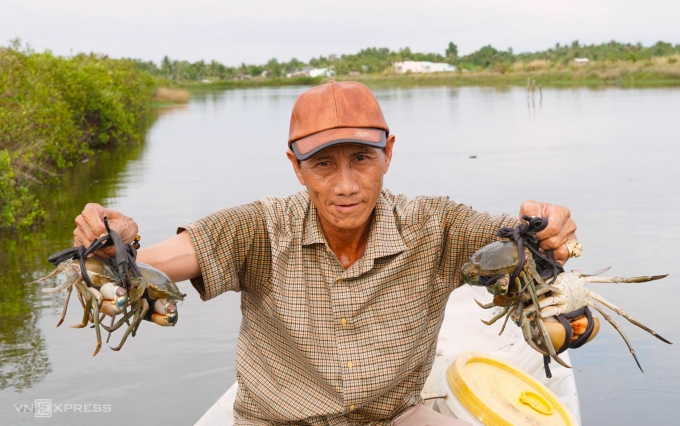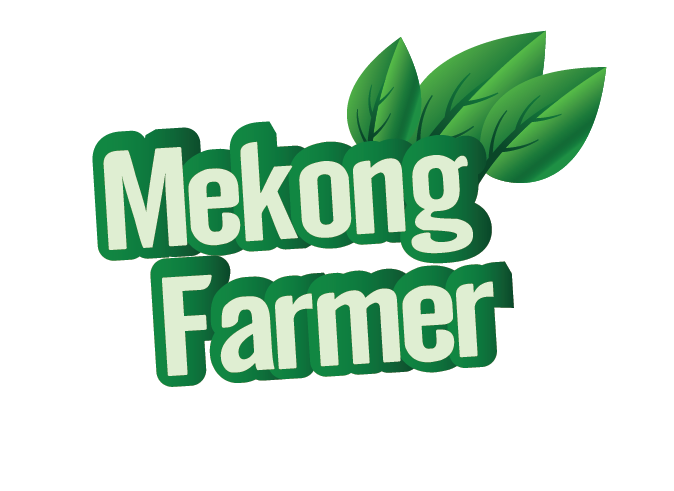Leaving the podium more than 30 years ago, Mr. Su, 60, in Ca Mau City, moved from industrial shrimp farming to extensive, natural model, earning more than one billion dong each year.
Mr. Huynh Thanh Su’s 7 -hectare shrimp farming area (often called Chin Lam) in Tan Thanh commune, is planned scientific with sediment ponds, breeding ponds and main farming areas. Each year, he harvested nearly one ton of shrimp and the amount of sea crabs significantly, becoming a model model that many households in the region came to learn.

He harvested shrimp gradually when he arrived. Image: An Minh
Once an elementary school teacher, he took a break in 1993 to focus on production. At that time, he had more than one hectare of rice land left by his parents. Low farming efficiency, he decided to switch to shrimp farming in 2000 when the whole region began to convert production.
Thanks to the hard work, he raised his broad shrimp, accumulated capital and then switched to industrial shrimp farming. However, in the period of 2020–2021, this model revealed many risks: increased materials, epidemics often. His health decreased, he found a new direction.
During a two -stage extensive shrimp farming model, Mr. Su had intention to change the way. Because the new farming process is more suitable when the cost is low, less risky, easy to care for, without feeding.
He renovated the entire farm, including a 2,000 m2 pond, 1,500 m2 settling ponds and mass shrimp ponds. Water processed, carefully filtered before entering the pond. After a month, strong growing shrimp will be released to the main area. Thanks to the separation of the stage, the survival rate is high, avoiding shrimp crabs as a direct drop.
In addition to shrimp, he combined with sea crabs in the same pond, reasonable density so that crabs do not harm shrimp. Crabs take advantage of natural food sources, do not need much care but for good economic efficiency.
Each crop lasts about 2–2.5 months. With an output of 500 kg of black tiger shrimp per hectare, two crops each year, plus income from crabs, Mr. The earned more than 1.2 billion dong after deducting expenses.
In particular, shrimp raised by natural methods have beautiful colors, firm meat, easy to sell at high prices. Traders often buy transport to the provinces, not through intermediaries or wait.
To be effective, he carefully controlled the water environment, ensuring the water level is always stable, especially in the hot season. The shore system is firmly reinforced, preventing leakage. Food for shrimp is a natural organism, limiting the use of preparations, helping to save costs and safety for the product.
Although many times faced difficulties when the model had failed, his wife was sick, his children were expensive, he did not give up. The model conversion process was considered by him as a turning point: less risk, low investment cost, stable efficiency.

Crab farming combined with high profits in the model. Image: An Minh
In addition to doing good economy, he is also the Chairman of Tan Thanh billionaire farmer club, often sharing experiences for other farming households. He has repeatedly awarded certificates of merit from local authorities and agriculture.
According to Mr. Ho Quoc Trang, Chairman of the Farmers’ Union of Tan Thanh Commune, the whole commune has nearly 400 hectares of improved extensive shrimp farming, but his model is typical of efficiency and sustainability. Many peasant delegations and technical staff come to visit and learn from his way.
Not only stopping at production, Mr. Su is also in the same locality to organize training courses, advice on farming process, environmental treatment, good varieties … to help farmers improve their income.
His success shows the effectiveness of the pure shrimp farming model if applied properly. Most importantly, farmers need to understand the environment, control risks and choose the direction to suit the actual conditions.
“No need for high technology or large capital, farmers can still get rich if they choose the right model and persevere with it,” Mr. Trang summarized.
An Minh



